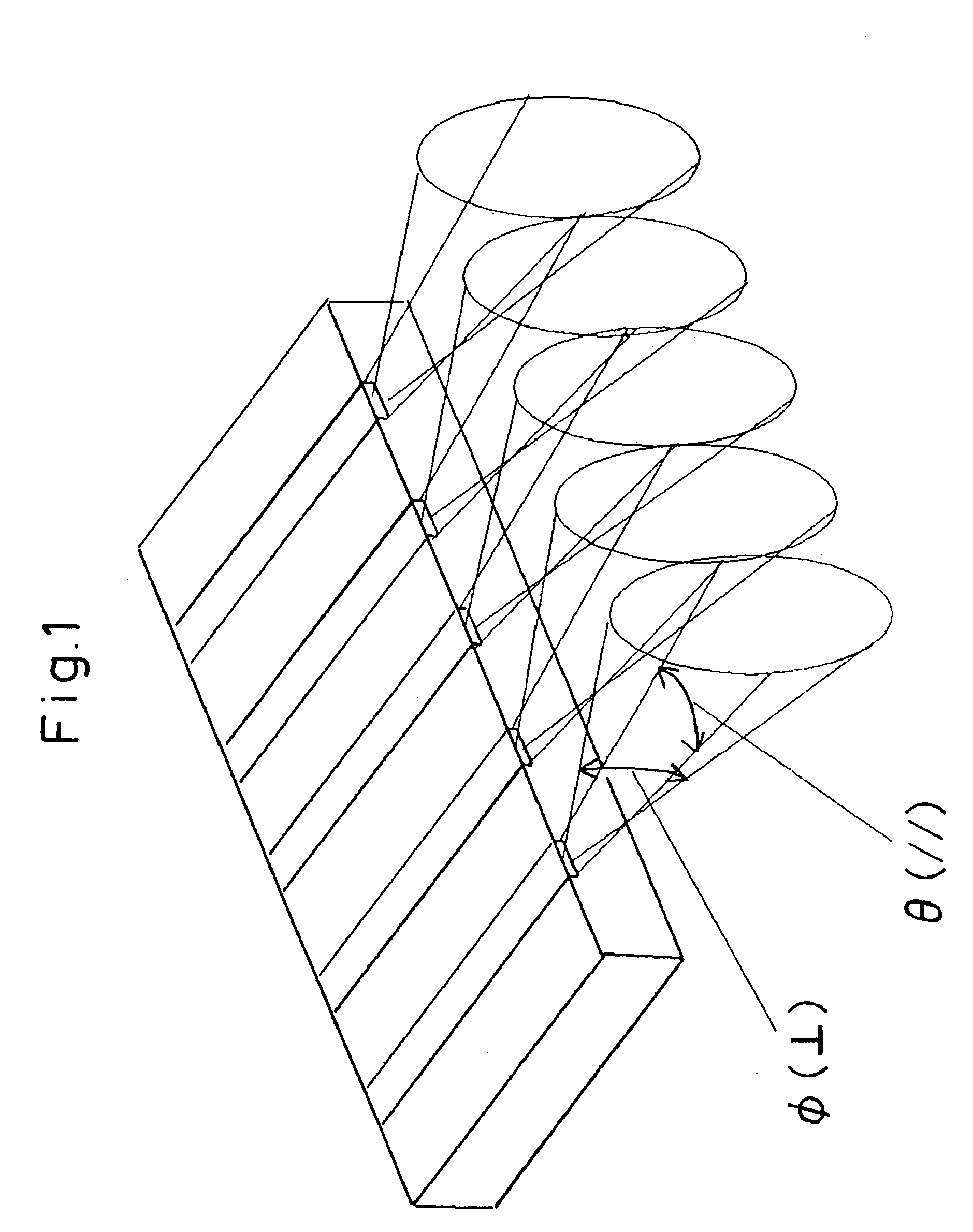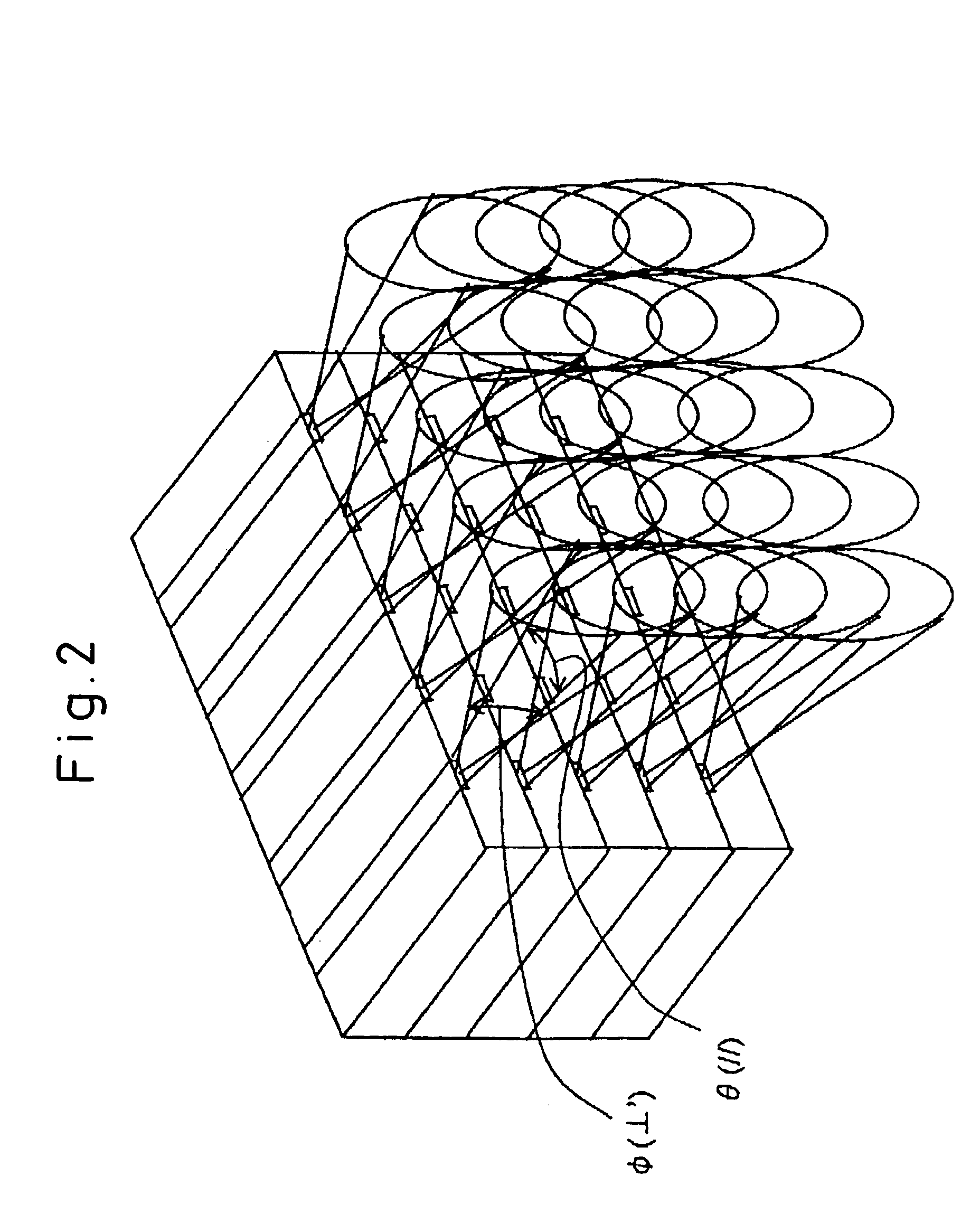Semiconductor laser device and solid-state laser device using same
a laser device and semiconductor technology, applied in semiconductor lasers, instruments, optical elements, etc., can solve the problems of difficult to concentrate the emission laser beams of an ld stack, and achieve the effects of small area, small focal point, and sufficient us
- Summary
- Abstract
- Description
- Claims
- Application Information
AI Technical Summary
Benefits of technology
Problems solved by technology
Method used
Image
Examples
Embodiment Construction
[0148] It has been described herein that a laser diode stack array is hard to focus since the divergence angles of the beams differ between the fast axis and the slow axis. According to an exemplary embodiment of the present invention, the technique may be used that rotates the beams by 90° to enable suitable collimation for each axis. Using such technique, it is possible to first collimate the large dispersion fast axis and later slowly and stably independently collimate the small dispersion slow axis.
[0149] Further, the laser diode stack array may form a planar light source comprised of a plurality of light sources having parallel optical axes arranged on the same plane.
[0150]FIG. 3 shows the state of parallel beams entering a condensing lens having a focal length f. For simplification, the case of two parallel beams is shown. In such case, all beams are condensed at the focal point of the lens and a single image is obtained on the center axis.
[0151] On the other hand, when bea...
PUM
 Login to View More
Login to View More Abstract
Description
Claims
Application Information
 Login to View More
Login to View More - R&D
- Intellectual Property
- Life Sciences
- Materials
- Tech Scout
- Unparalleled Data Quality
- Higher Quality Content
- 60% Fewer Hallucinations
Browse by: Latest US Patents, China's latest patents, Technical Efficacy Thesaurus, Application Domain, Technology Topic, Popular Technical Reports.
© 2025 PatSnap. All rights reserved.Legal|Privacy policy|Modern Slavery Act Transparency Statement|Sitemap|About US| Contact US: help@patsnap.com



